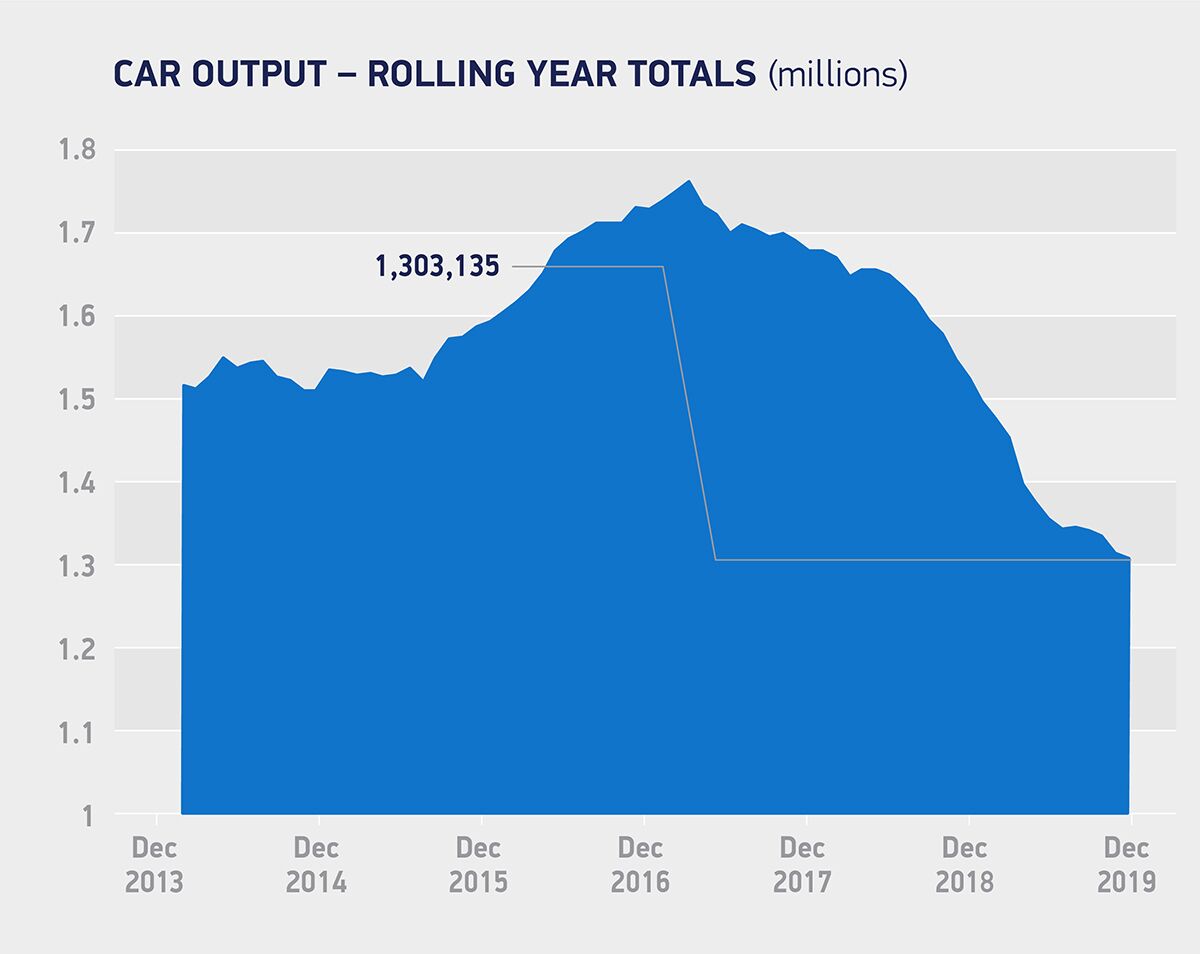
2020 UK car production fell 14.2% in 2019 to 1,303,135 units, according to the Society of Motor Manufacturers and Traders (SMMT).
According to the society, output was affected by multiple factors, including weakened consumer and business confidence at home, slower demand in key overseas markets, a number of significant model production changes and a shift from diesel across Europe. Factory shutdowns in the spring and autumn, timed to mitigate expected disruption arising from the anticipated departure of the UK from the EU on 29 March and 31 October, also had an effect, the SMMT said.
Manufacturing for domestic car buyers fell 12.3%, to 247,138 units, while exports were down 14.7%, although overseas orders continued to drive volumes, accounting for more than eight in 10 cars built and totalling over one million units. While shipments to the EU27 fell by 11.1%, its share of exports rose by two percentage points to 54.8%. Meanwhile, trade with the UK’s next largest markets, the US (representing 18.9% of export volumes), China (5.3%) and Japan (3.2%) also fell, with exports down 9.8%, 26.4% and 17.7% respectively.
The SMMT noted that output for the UK’s small volume car manufacturing sector increased 16.2% in the year while the production of alternatively fuelled cars rose by 34.7% to 192,304 units.
‘Every country in the world wants a successful automotive sector as it is a driver of trade, productivity and jobs,’ said Mike Hawes, SMMT chief executive. ‘Given the uncertainty the sector has experienced, it is essential we re-establish our global competitiveness and that starts with an ambitious free trade agreement with Europe, one that guarantees all automotive products can be bought and sold without tariffs or additional burdens.’
According to the society, the latest independent production outlook has decreased expectations for 2020 to 1.27 million units, down from the 1.32 million forecast made in November 2019.
This story uses material from the SMMT, with editorial changes made by Materials Today. The views expressed in this article do not necessarily represent those of Elsevier.




